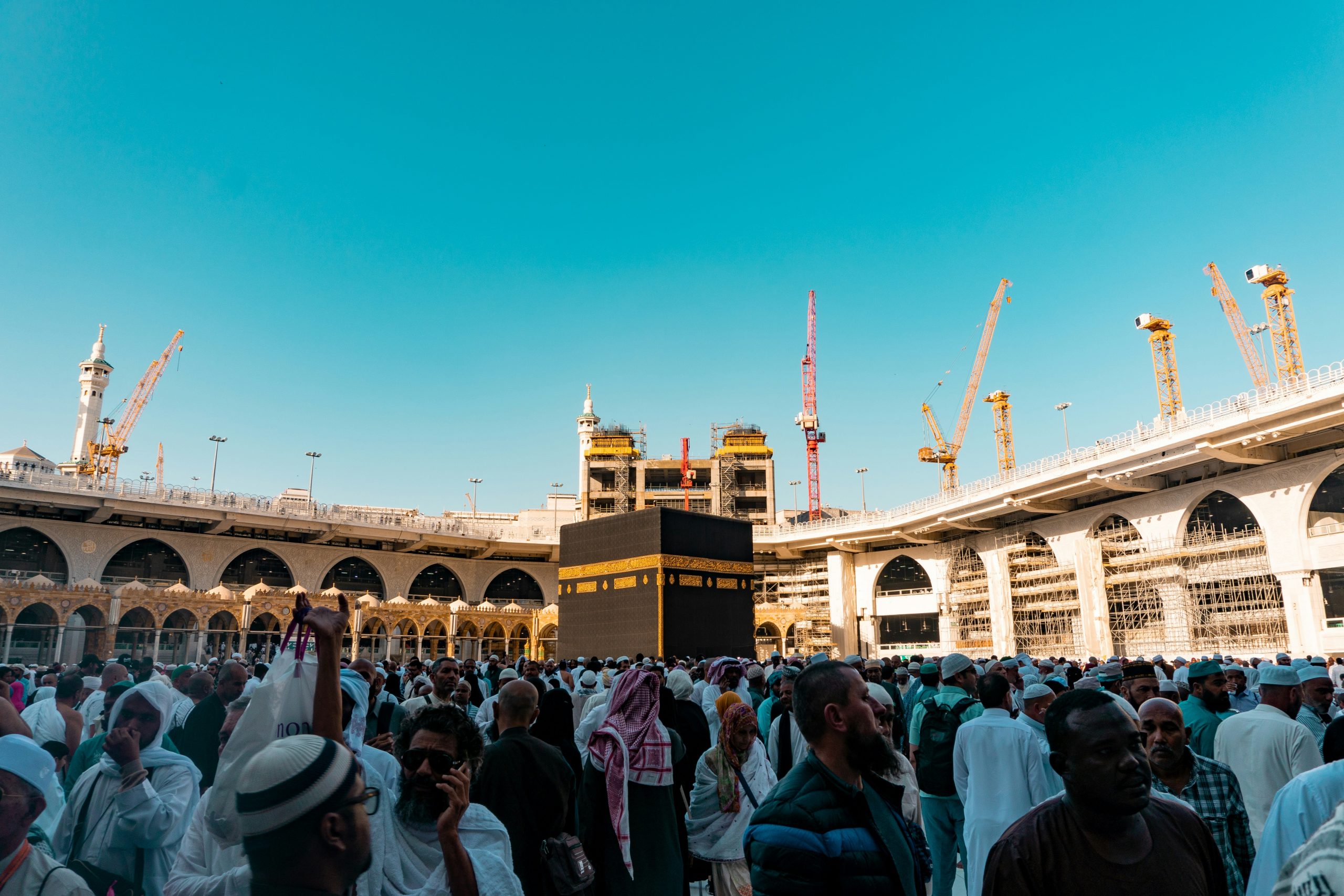This question was originally answered by Shaykh Abu Eesa over at FaithIQ, watch the full video here
Right now, millions of Muslims are preparing to undertake the journey of a lifetime:
Hajj, the fifth pillar of Islam.
Most will be going for the first time ever, many will have spent their entire lives saving for this moment, and so getting it right is crucial!
For the uninitiated, here is a simple, step-by-step guide to the rites of Hajj.
Whether it’s for yourself or a family member, we hope this helps!
What you need to know about worship…
The scholars of Islam have broken down all acts of worship into three core components, and understanding them is the first key to clarity.
These are the Arkaan (pillars), Wajibaat (obligations), and Sunan (recommended acts).
This classification helps the pilgrim understand the essential components of the ritual, distinguish between what is mandatory and what enhances the experience, and ensure their Hajj is valid and accepted.
The Pillars (Arkaan) of Hajj
The Arkaan are the most critical components of Hajj. If any of these pillars are omitted, the Hajj becomes invalid. There is no form of compensation or expiation for missing a pillar. That means one must return and complete the Hajj properly.
There are four essential pillars:
- Entering the State of Ihram
This refers not just to wearing the special garments but to entering into the spiritual and legal state of Ihram through intention. This includes committing to abstain from prohibited acts such as cutting hair, engaging in marital relations, or other restricted behaviors. The garments serve to emphasize this sanctified state, but the essence lies in the intention and mindset.
- Standing at Arafah
Spending at least a moment in Arafah during the day or night of the 9th of Dhul Hijjah is a pillar of Hajj.
Even a few minutes at Arafah are sufficient to fulfil this requirement, but it must be within the designated time.
- Tawaf al Ifadah (Main Circumambulation)
This is the key circumambulation of the Ka‘bah that must be performed after returning from Arafah and Muzdalifah. It is a mandatory part of Hajj and cannot be omitted.
- Sa’i between Safa and Marwa
This act involves walking briskly between the hills of Safa and Marwa, symbolizing the devotion of Hajar, the mother of the Prophet Ismail, as she searched frantically for water between these two mountains. Like Tawaf, this Sa’i is essential and must be completed.
The Obligations (Wajibaat) of Hajj
The wajibaat are actions that must be done, and omitting any of them requires a compensatory sacrifice. However, unlike the pillars, missing a wajib action does not invalidate the Hajj.
There are seven obligations in Hajj:
- Assuming Ihram from the Miqat
Pilgrims must enter the state of Ihram at designated points known as Miqat. These include places such as Dhul Hulayfah for those coming from Madinah, or Juhfah for those flying into Jeddah. This involves both the physical garments and the spiritual state.
- Remaining in Arafah until Sunset
While merely arriving at Arafah during the designated time fulfils a pillar, staying until sunset is considered an obligation. The distinction lies in the duration of presence.
- Spending the Night at Muzdalifah
Pilgrims must spend the majority of the night at Muzdalifah after leaving Arafah. This overnight stay is a key obligation.
- Spending Nights in Mina
Pilgrims are obligated to stay in Mina for the nights of the 10th, 11th, and 12th of Dhul Hijjah. While the 13th is optional, the first three nights are compulsory.
- Stoning the Pillars
This act must be performed in the correct sequence and on the prescribed days. It symbolizes the rejection of the Shaytan, following the example of Prophet Ibrahim (A.S) as he set out to fulfil the order from Allah to sacrifice his son.
- Shaving or Trimming the Hair
Shaving (for men) or trimming (for men and women) the hair is a required act of ritual purification upon completion of the major rites of Hajj.
- Tawaf al Wada (Farewell Tawaf)
Before leaving Makkah, pilgrims must perform a farewell circumambulation of the Ka‘bah, known as “Tawaf al Wada”. This symbolizes taking leave from the sacred sanctuary.
For every wajib act that is missed, a compensatory sacrifice must be made, typically a sheep, or a share in a cow or camel (one-seventh per person).
The Recommended Acts (Sunan) of Hajj
All other actions associated with Hajj fall under the category of Sunnah. These enhance the spiritual reward and beauty of the pilgrimage but are not required for its validity. Omitting them does not incur sin, nor does it necessitate a sacrifice.
Examples of Sunnah actions include:
Running during part of the Sa’i (for men)
Performing Tawaf al-Qudum (the arrival Tawaf)
Reciting specific Adhkar and Du’as recorded from the Prophet ﷺ at various stages of Hajj
Performing two units of prayer after Tawaf
Engaging in extended supplications during the day of Arafah
These recommended acts serve to enrich the pilgrim’s experience, offering spiritual depth and greater reward.
In summary, your Hajj is made up of…
4 Pillars (Arkaan): Absolutely essential; missing any invalidates the Hajj.
7 Obligations (wajibaat): Mandatory; missing any requires a compensatory sacrifice.
Sunan: Recommended; they bring extra reward and barakah to the Hajj, but are not required.
Understanding these distinctions will allow you to perform your Hajj with confidence, clarity, and the highest standard.
What if I have other questions?
All this sounds good, but what about the nitty gritty aspects?
“What should women do if their menses begin during Hajj?”
“What nullifies my Ihram?”
“How much hair am I supposed to cut?”
“What if I don’t have a Mahram with me?”
For more guidance, check out our complete playlist of Frequently Asked Hajj Questions over on YouTube.
May Allah accept the efforts of all our hujjaj this year, and invite us all repeatedly to His blessed house on earth.



Recent Comments